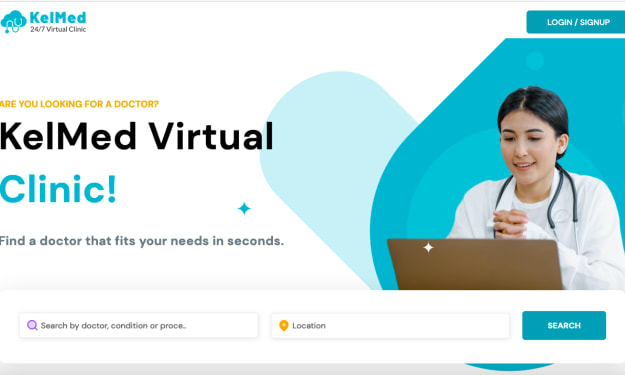Telemedicine: The Future of Healthcare Delivery
Kelmed Clinic

Introduction
Telemedicine is revolutionizing the way healthcare is delivered by utilizing digital technologies to provide remote access to medical care. This innovative approach allows patients to connect with healthcare professionals from the comfort of their homes, eliminating the need for in-person visits. Telemedicine has the potential to improve patient outcomes, reduce healthcare costs, and increase access to care for individuals living in rural or underserved areas. In this blog, we will explore the various aspects of telemedicine, its benefits, and the challenges it faces as it becomes a more integral part of healthcare systems worldwide.
The Evolution of Telemedicine
The concept of telemedicine dates back to the early 20th century when doctors would use the telephone to provide remote consultations to their patients. With the advent of the internet and advances in digital technology, telemedicine has evolved into a more sophisticated and user-friendly platform. Today, telemedicine encompasses a wide range of services, including remote monitoring, virtual consultations, and telehealth applications that can be accessed on smartphones and tablets.
Benefits of Telemedicine
1. Increased Access to Care: Telemedicine allows healthcare providers to reach patients who may have difficulty accessing care due to geographic location, transportation issues, or mobility limitations. This is especially beneficial for individuals in rural and underserved areas who may not have easy access to specialized care.
2. Time and Cost Savings: Telemedicine eliminates the need for patients to travel long distances for appointments, reducing time spent on transportation and associated costs. Additionally, telemedicine can reduce the number of missed appointments and the burden on emergency rooms, ultimately saving both patients and healthcare providers time and money.
3. Improved Patient Outcomes: Telemedicine enables healthcare professionals to monitor patients remotely, allowing for early detection and intervention of potential health issues. This proactive approach can lead to better management of chronic conditions and improved overall health outcomes.
4. Enhanced Patient Engagement: Telemedicine empowers patients to take a more active role in their healthcare by providing them with the tools to monitor their health and communicate with their providers. This increased engagement can lead to more informed decision-making and better adherence to treatment plans.
Challenges of Telemedicine
1. Technological Barriers: Telemedicine relies on advanced technology, which can be expensive and difficult for some patients and providers to access. Additionally, telemedicine platforms must be user-friendly and secure to protect patient privacy and ensure compliance with regulations such as HIPAA.
2. Reimbursement and Legal Issues: Many insurance companies are still working to develop reimbursement policies for telemedicine services, which can create uncertainty for both patients and providers. Additionally, telemedicine can raise legal and regulatory challenges, such as licensure and credentialing requirements for healthcare providers practicing across state lines.
3. Resistance to Change: As with any new technology, there can be resistance to change among healthcare providers and patients. Some may be hesitant to embrace telemedicine due to concerns about the quality of care, the loss of personal connection with their healthcare provider, or the potential for misdiagnosis.
The Future of Telemedicine
Despite the challenges, telemedicine is poised to become an increasingly important part of healthcare delivery. As technology continues to advance and the benefits of telemedicine become more widely recognized, we can expect to see greater adoption of these services by both patients and providers.
To ensure the successful integration of telemedicine into healthcare systems, it is essential to address the technological, reimbursement, and legal barriers that currently exist. This will require collaboration between healthcare providers, insurance companies, and policymakers to develop clear guidelines and policies that support the growth of telemedicine.
Conclusion
Telemedicine has the potential to transform the way healthcare is delivered by providing remote access to medical care, improving patient outcomes, and increasing access to care for underserved populations. As technology continues to evolve and the benefits of telemedicine become more widely recognized, it is essential that we address the challenges and barriers to its adoption. By working together, healthcare providers, insurance companies, and policymakers can help to ensure that telemedicine becomes an integral part of healthcare systems worldwide, ultimately improving the health and well-being of patients everywhere.
You can also check Virtual Clinic & Telemedicine Services here:
- KelMed Virtual Clinic | Urgent Medical Care Everywhere & Anytime
- About Us – KelMed Clinic





Comments
Kelmed Clinic is not accepting comments at the moment
Want to show your support? Send them a one-off tip.